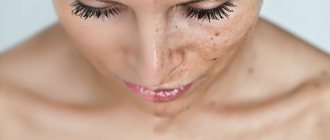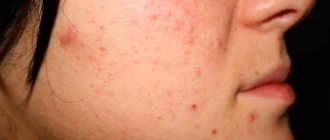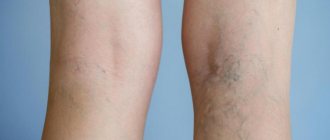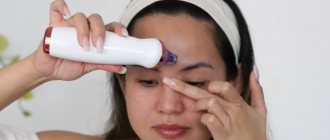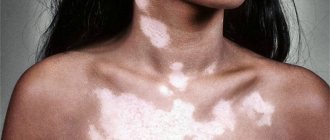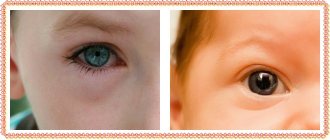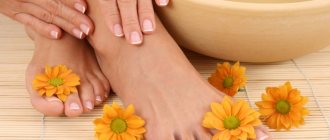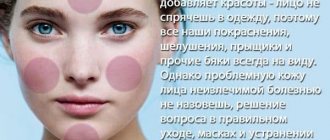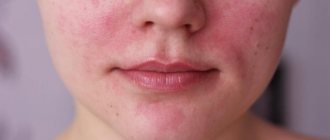How to remove inflammation on the face at home
For people with problem skin, the appearance of acne on the face is nothing new. Many girls use foundation or powder for camouflage. These drugs greatly aggravate the situation and provoke even greater inflammation. There are a number of medications that help get rid of the hated pimple in a short time. Traditional medicine will also help cope with this problem.
Treatment
You should start treating the problem by strengthening your immune system.
Getting rid of an unpleasant symptom is not so easy. The first thing to do when the healing process begins is to strengthen the condition of the blood vessels, improving microcirculation and pressure in them. Aggressive methods cannot be used because the capillaries are quite fragile and brittle. Enzyme peeling has a good effect, it deeply cleanses the skin, and it is based on plant components.
How to remove redness from the nose using folk remedies?
Inflammation of the skin from acne: causes of the process
Human skin has a large number of pores that contain subcutaneous sebum. During the day, dust, dirt and particles of cosmetics settle on the epidermis. As a result, the pores become severely clogged and the inflammatory process begins.
Often the cause of pimple inflammation is insufficient personal hygiene, self-squeezing of abscesses or damage to the upper layer of the epidermis. Pimples also appear as a result of hormonal changes in the body or during long-term use of medications (antibiotics, oral contraception, etc.).
Home remedies for pimple inflammation: list of effective remedies
To treat the inflammatory process, proven pharmaceutical products are used that eliminate pain, redness and other unpleasant symptoms. It is advisable to use it after preliminary consultation with a doctor. Otherwise, it threatens to worsen the condition of the skin and spread inflammation to other areas.
Zinc mash
Refers to products for spot application. Zinc has antibacterial properties and dries the skin a little. A small amount of mash is applied to the problem area before bedtime. In the morning, the inflammation will subside a little, but complete recovery requires 2-3 days. To enhance the effect, it is recommended to use the mash at least 3 times a day in the first days after the appearance of a pimple.
Salicylic acid
The drug belongs to the group of antibacterial and anti-inflammatory drugs. Salicylic acid can be safely used at home to treat acne. Accelerates the regeneration of the upper layers of the epidermis, penetrates deep into the skin, and has a healing effect.
To obtain the most effective results, it is recommended to mix salicylic acid with boric or folic acid. The complex action ensures rapid recovery of the patient.
This medication should be used with caution by people prone to allergic reactions. Before use, you must make sure that you are not allergic to salicylic acid. The product also causes drying of the skin, so excessive use leads to burns on the face.
How to get rid of redness using powder
Beneficial properties include:
- antibacterial and drying effect;
- rapid relief of the inflammatory process;
- good cosmetic effect;
- getting rid of oily shine (important for people with oily skin).
The powder has a delicate texture, so after use there are no scars or scars left on the skin. Some powders contain extracts of medicinal plants (St. John's wort, calendula, etc.), which nourish the skin with essential substances.
Use in pure form or add as an ingredient to therapeutic masks. In the first case, the drug is applied pointwise to the affected area with a thin brush. The effect is observed within 30 days of daily use.
Reduce redness with eye drops at home
Oddly enough, but a remedy such as Vizin also helps to get rid of pimples on the face in the shortest possible time. For treatment, apply a few drops of the drug to a clean cotton pad and place in the freezer for 15 minutes. After the time has passed, apply to the inflamed area for a few seconds. This procedure will help quickly get rid of redness and other unpleasant signs, but does not treat the underlying cause of the appearance.
Treatment with aspirin
The drug is used as part of medicinal masks. To do this, crush 1 tablet of Aspirin and mix with white clay, a few drops of vitamin A and E.
Distribute evenly over the entire face or apply to individual areas of the skin for 10-15 minutes. Exceeding this time increases the chances of dry skin and burns.
Garlic juice
Garlic has natural antibacterial properties and helps quickly cope with inflammation on the face. Freshly squeezed juice contains a large amount of zinc and phytoncides, which help cope with acne. The product is applied pointwise to the affected area, left for a while, then washed off with warm water and baby soap.
Is it possible to burn acne with iodine on the face?
It is necessary to use an alcohol solution of iodine to combat acne after prior consultation with a doctor. The use of the product has several features:
- Iodine is applied pointwise exclusively to uncleansed skin.
- To get rid of the burning sensation and yellow spots, it is recommended to first apply a small amount of moisturizer (cream, lotion, etc.) to the selected areas.
- It is forbidden to use iodine to lubricate boils or teenage pimples.
- The course of treatment should not exceed 60 days, otherwise there is a risk of overdose.
If, after applying iodine, severe redness and burning occurs, you should immediately wash off the product and lubricate the surface with a rich cream. Otherwise, the risk of developing a burn and causing a scar in the future increases.
Cold
A quick and effective way to get rid of a pimple is a piece of ice. Applied locally, cold relieves redness and redness. To enhance the effect, it is better to use ice from infusions of medicinal herbs (calendula, chamomile, etc.).
Possible diseases
Redness of the skin is observed with malar erythema. The cause of the appearance of a red rash in the cheekbone area can be hot weather, pregnancy, stressful situations, or the ovulation period. Photodermatitis, or sun allergy, also causes facial redness due to the skin's hypersensitivity to sun exposure.
Types of redness on the face:
- redness on the cheeks and bridge of the nose;
- spider-shaped blood vessels, especially in the cheeks and nose;
- rough red pimples accompanied by itching and tingling;
- thickened red skin around the nose, on the forehead.
Skin diseases cause hyperemia, which is accompanied by raised plaques, papules, peeling, and dryness. Some skin lesions, rosacea, acne dermatitis, are characterized by excessive redness.
Diseases that cause the face to turn red:
- Juvenile acne or acne. A disorder that occurs during puberty as a result of increased activity of the sebaceous glands. On sensitive skin, in addition to acne, redness, dryness, and irritation develop.
- Acne rosacea. A chronic skin disease that has cycles of relapse and remission. Occurs more often in women with white skin. It is characterized by redness in the central part of the face, purulent pimples, and increased skin temperature in the area of inflammation.
- Atopic dermatitis. An inflammatory disease of the skin not only of the face, but also of the body, accompanied by red papules, itching, and peeling.
- Cuperosis. When the disease occurs, blood circulation in the facial area is disrupted, causing damage to small capillary vessels that are located closer to the surface of the skin. The capillary pattern becomes clearer over time, and stripes of capillaries are visible. Associated symptoms are itching, tingling, burning. Over time, the vessels, expanding more and more, are unable to contract normally. The disease develops in stages. At stage 1, hyperemia occurs for no apparent reason, periodic sensations of “hot flashes” on the skin of the face. At stage 2, a clear picture of the vascular pattern is visible. During stage 3, the disturbance of local circulation becomes chronic, and the possibility of developing inflammatory reactions increases.
Redness on the face due to rosacea will progress to rhinophyma
Doctors associate the appearance of rosacea, the most common cause of redness, with taking hormonal contraceptives, replacement therapy for endocrine system disorders, and pregnancy. There is also a connection between the appearance of rosacea and diets, bad habits, and frequent consumption of coffee and chocolate.
Redness on the face, which can only be removed by curing the underlying disease, is often caused by infections, both systemic and local:
- Erythema infectiosum. The cause of the disease is parvovirus B19. The red rash on both cheeks has a clear pattern in the form of a slap mark. Simultaneously with the lesion on the face, the rash appears on the arms and legs. The disease rarely occurs in people with a healthy immune system.
- Scarlet fever. A red skin rash appears simultaneously with a sore throat. When the disease occurs, small red bumps appear on the skin, resembling sandpaper; the skin on the arms and legs is not affected. Another symptom is a bright red tongue.
- Streptococcal pharyngitis. Inflammation of the oral mucosa caused by infection. The disease is characterized by the appearance of a red rash.
Immune disorders affect the appearance of hyperemia in the facial area:
- Allergy. This may be a reaction to cold, and in addition to redness, dryness, peeling, and itching of the skin appear. The body's response to foods and plants manifests itself not only on the face, but also on the body and hands.
- Menopause. A decrease in the production of female sex hormones, estrogen and progesterone, affects the body of women. Menopause symptoms: facial flushing, frequent urination, insomnia, depression, can last for years depending on your health.
- Drug-induced and discoid lupus. In the dosage form, a red, butterfly-shaped erythema develops on the cheeks under the influence of long-term use of sulfonamides, antibiotics, and neuroleptics. With the discoid form, red scaly spots appear on the skin of the face, which can subsequently lead to atrophy of the facial skin.
- Cluster headaches. They occur in a series of attacks lasting no more than 15 minutes. Attacks may recur from several weeks to several months. Characteristic symptoms: flushing of the face, the appearance of tears, blockage of the nasal area, acute headache.
Endocrine disorders affect color changes:
- Hyperthyroidism. An active thyroid gland causes symptoms due to a high metabolic rate: high blood pressure, sweating, redness on the face, brittle hair, weight loss, menstrual irregularities. Frequent and severe facial redness in people with hyperthyroidism occurs in the summer.
- Cushing's syndrome. The disorder is caused by excess cortisol in the body. The typical manifestation is a round face with increased hyperemia, which is especially noticeable on the cheeks. Additional symptoms include acne, muscle weakness, high blood pressure.
Traditional medicine tips on how to remove inflammation on the skin from acne
There are several effective recipes for home treatment of facial acne. The most common are maxi, decoctions of medicinal herbs and creams.
Masks - how to quickly remove them overnight?
Prepared on the basis of various components: pharmaceutical preparations (aspirin, salicylic acid, boric acid, etc.), as well as from various improvised means:
- grate 1 fresh cucumber on a fine grater, add 1 chicken egg, mix until a homogeneous paste is obtained. Apply in several layers (each of the previous ones must dry well). Cucumber juice relieves redness and inflammation, egg white dries the skin;
- mask based on honey, lemon juice and yolk. Mix the ingredients until smooth, apply to the face, leave for 15 minutes and rinse with warm water. To obtain treatment results, 2-3 procedures are sufficient.
Creams - what to apply if a purulent pimple is inflamed?
Homemade creams are very popular:
- mix sour cream, lemon and cucumber juice, chicken yolks, alcohol. Mix all ingredients and place in refrigerator. After hardening, apply pointwise to affected areas. The shelf life of this ointment is 6 months;
- mix olive oil, tea tree oil, vitamin E and A and beeswax. Melt everything in a water bath or in the microwave, mix until smooth. Store in the refrigerator for no more than 30 days.
Herbs and decoctions if pressed
Rubbing with decoctions of medicinal plants helps relieve the inflammatory process, removes redness and other unpleasant symptoms of acne. St. John's wort, chamomile, calendula, lavender, etc. have such properties.
The pimple has become inflamed deep under the skin, what should I do?
Subcutaneous acne causes severe discomfort and pain to a person. The rod is located deep under the skin. To speed up the ripening process use:
- applying ice to the inflamed area. This procedure helps relieve redness and pain;
- then you need to warm the pimple well. High temperatures will speed up the ripening process and increase blood flow;
- apply bee honey.
Fresh aloe juice, which is applied to the affected area for 10-15 minutes, will help speed up the process of pimple maturation. If folk remedies do not help, then you need to resort to the use of pharmaceutical drugs (salicylic acid, antibacterial ointments, etc.).
Consequences of squeezing pimples
Experts categorically prohibit squeezing out pimples on your own. This leads to the addition of a secondary infection and aggravation of the patient’s condition. Also, popping your pimples yourself increases your chances of scarring in the future.
To combat acne and inflammation of the skin, various pharmaceutical and folk remedies are used. Their use should be carried out after preliminary consultation with a specialist. It is forbidden to treat boils and other purulent rashes on your own. Before starting treatment, you need to make sure there is no allergic reaction to the components of the product.
Other reasons
Other reasons can also provoke the appearance of a defect, namely:
- sudden changes in temperature;
- weak walls of blood vessels. Usually, such people have a problem when they have been in the cold. Smokers and people with thyroid disorders are at risk. Red vessels are effectively removed by laser, but this procedure does not strengthen the condition of the vessels and does not protect against the appearance of redness on other parts of the body;
- a red nose is a common occurrence in alcoholics. Abuse of alcoholic beverages leads to dilation of blood vessels, increased blood pressure, and disruption of the functional activity of the circulatory system. All these changes cannot but affect the shade of the nose;
- poor nutrition. Fried, salted, smoked, fast food - all this and much more can cause a change in skin tone;
- nervous tension and excitement. Psycho-emotional stress leads to blood rushing to the brain and the ears, nose, and cheeks may turn red. Breathing exercises, as well as consultation with a psychologist, can normalize the emotional state;
- cosmetical tools. Incorrectly selected or cheap, low-quality cosmetic products can cause itching, flaking and redness;
- chronic diseases of the digestive system;
- overweight.
